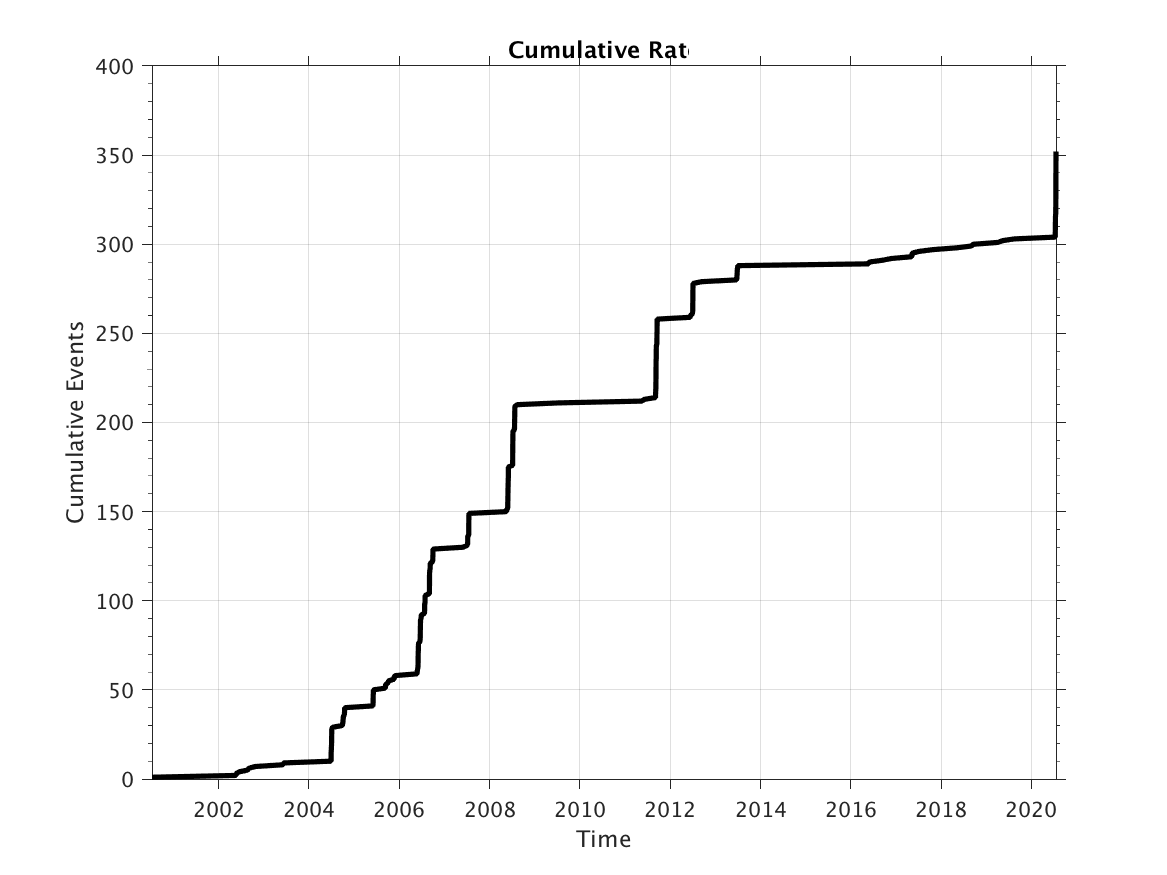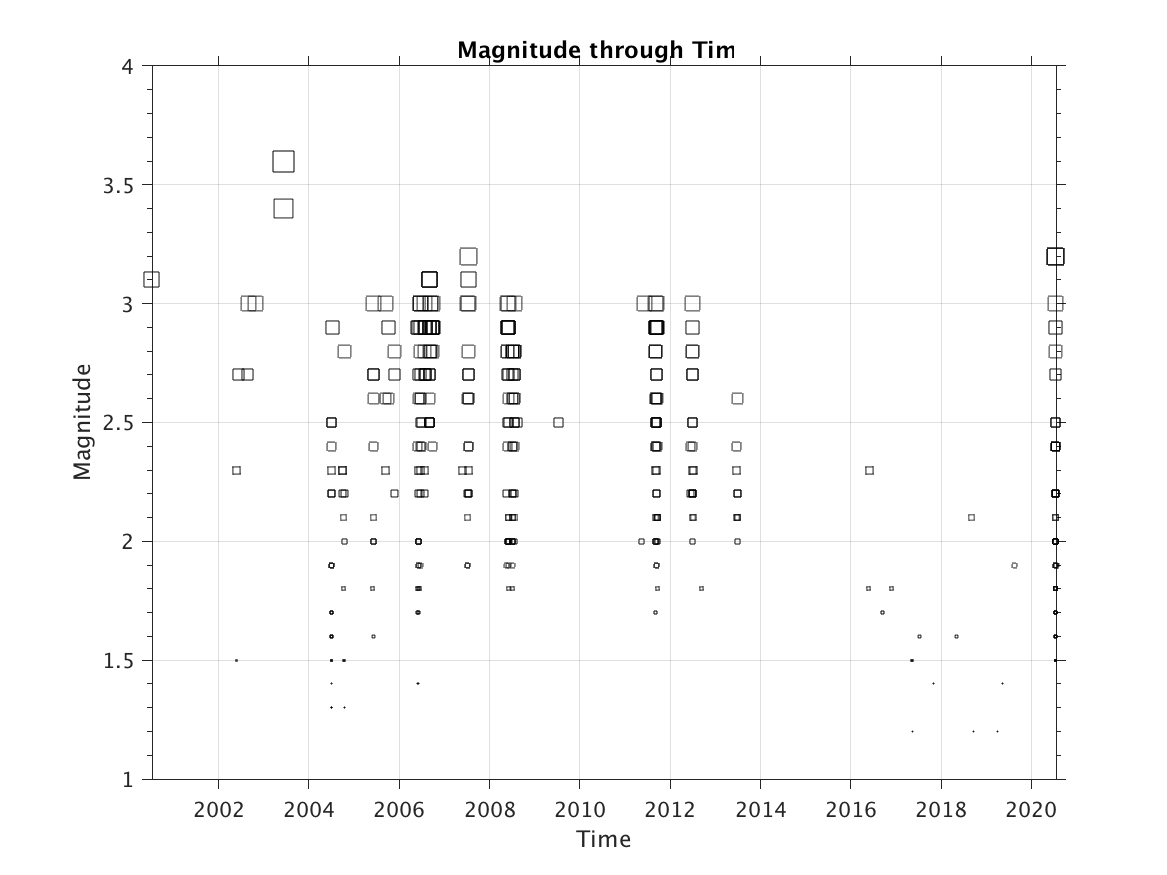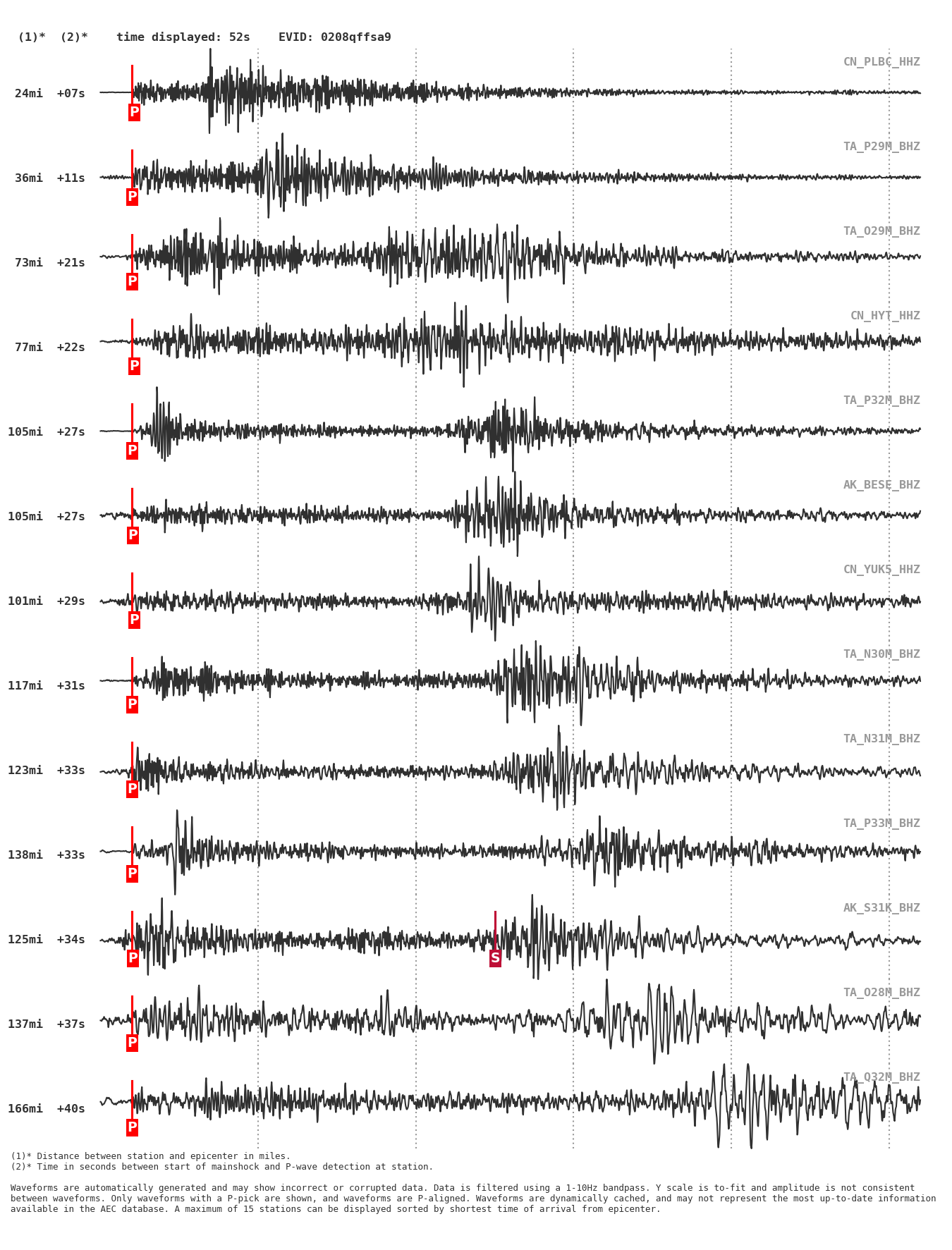



Seismic activity near Mt. Ogden and Wright Glacier, about 40 miles east of Juneau, picked up starting on July 10, 2020 (Figure 1). Juneau residents may have felt some of these quakes.
Periodic seismicity near Mt. Ogden has been observed since the 1970s, with event rates usually peaking in summer and early fall. These events tend to cluster near the Speel River, where it drains glaciated areas of Mt. Ogden. Some of these events reach magnitude 3 level and can even be felt (Figure 2). The levels of activity, however, are not the same every year. Seismicity rates of the July 2020 series, for example, have not been observed since 2011–2012 (Figure 1).
Possible explanations for the source of this seismicity are (1) glacier and ice-related dynamics or (2) faulting on fractures in Earth’s crust. Some researchers also have noted an increase in activity corresponds with an increase in surface water input.
So, how can we decide which mechanism is right? First of all, these events have different characteristics than typical tectonic earthquakes observed in Southeast Alaska (see Figure 3 for Mt. Ogden event example and Figure 4 for a typical tectonic earthquake). They have emergent (non-impulsive) seismic arrivals and monochromatic waveforms. Emergent arrivals tell us that the source of these events has more gradual build up, as opposed to the sudden energy release of a tectonic earthquake. Monochromatic waveforms, which do not have a wide variety of frequencies, indicate the seismic waves are generated with the presence of fluids. These events are also highly seasonal, mostly occurring in warmer months when there is more glacial melt and surface water present. These are the main reasons why most researchers attribute seismic activity near Mt. Ogden to glacial dynamics.
Glaciers are a well-recognized source of seismic activity in Alaska, with frequent recordings of icequakes in the Prince William Sound region, Icy Bay, and Yakutat Bay. Moreover, such seismic activity has been observed in other glaciated regions around the globe, such as in Greenland and Antarctica.



